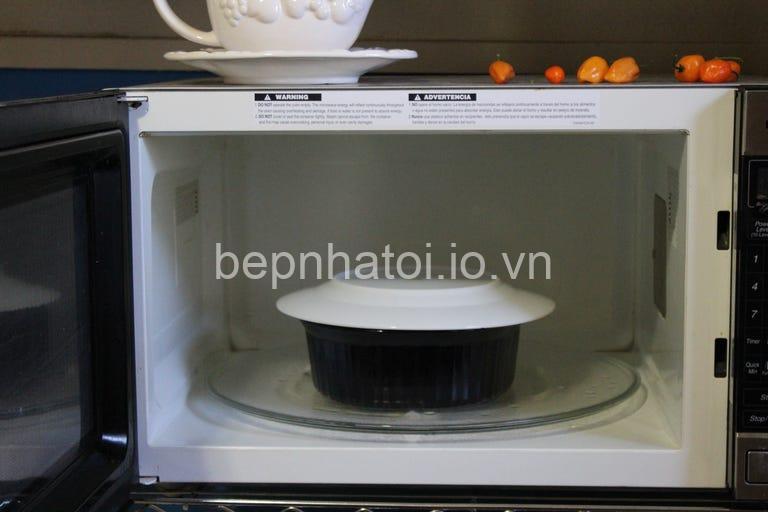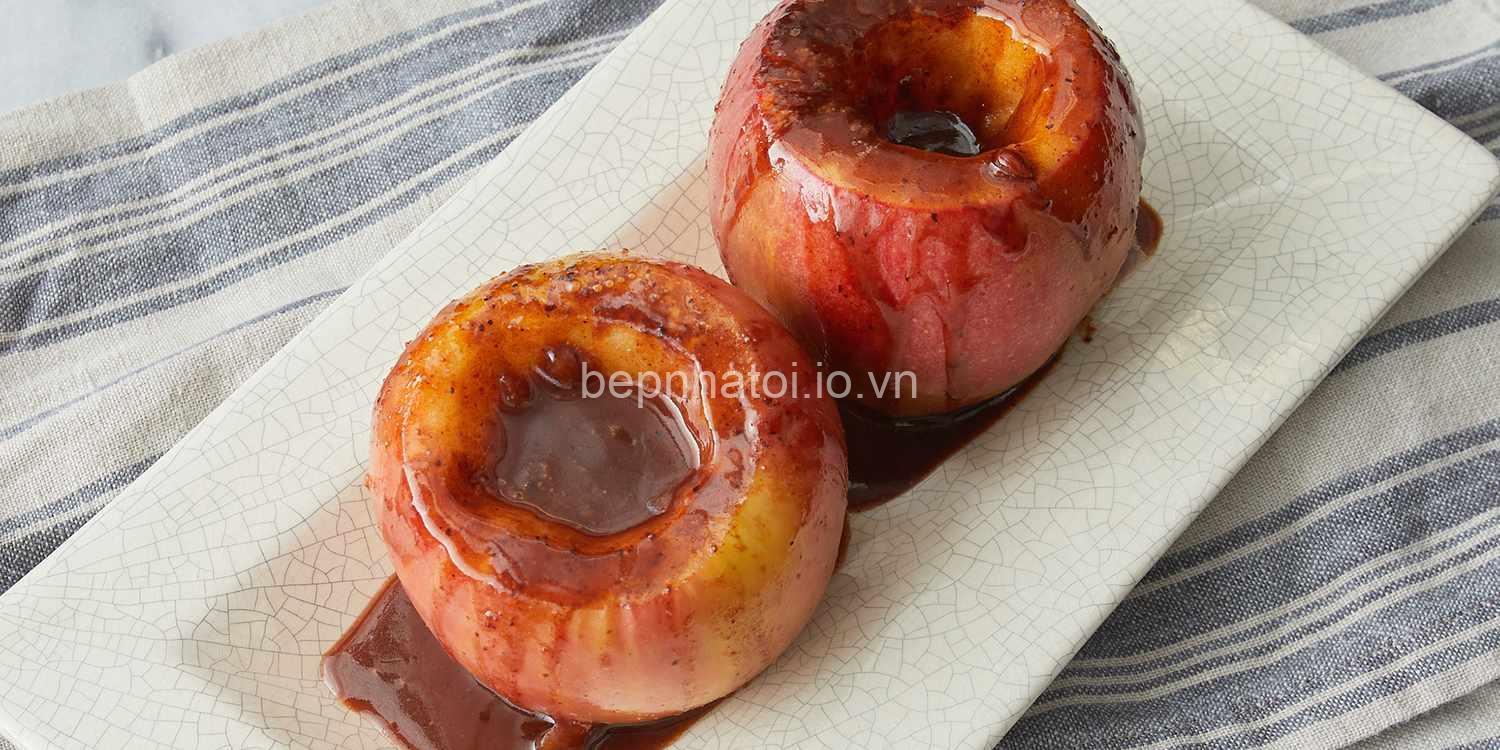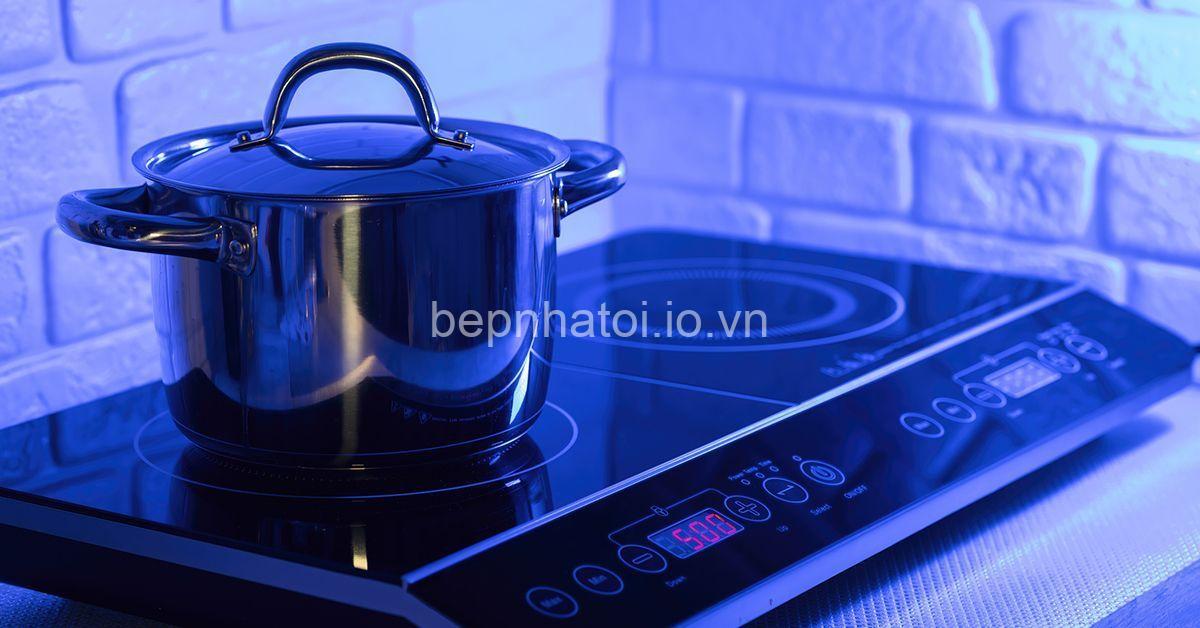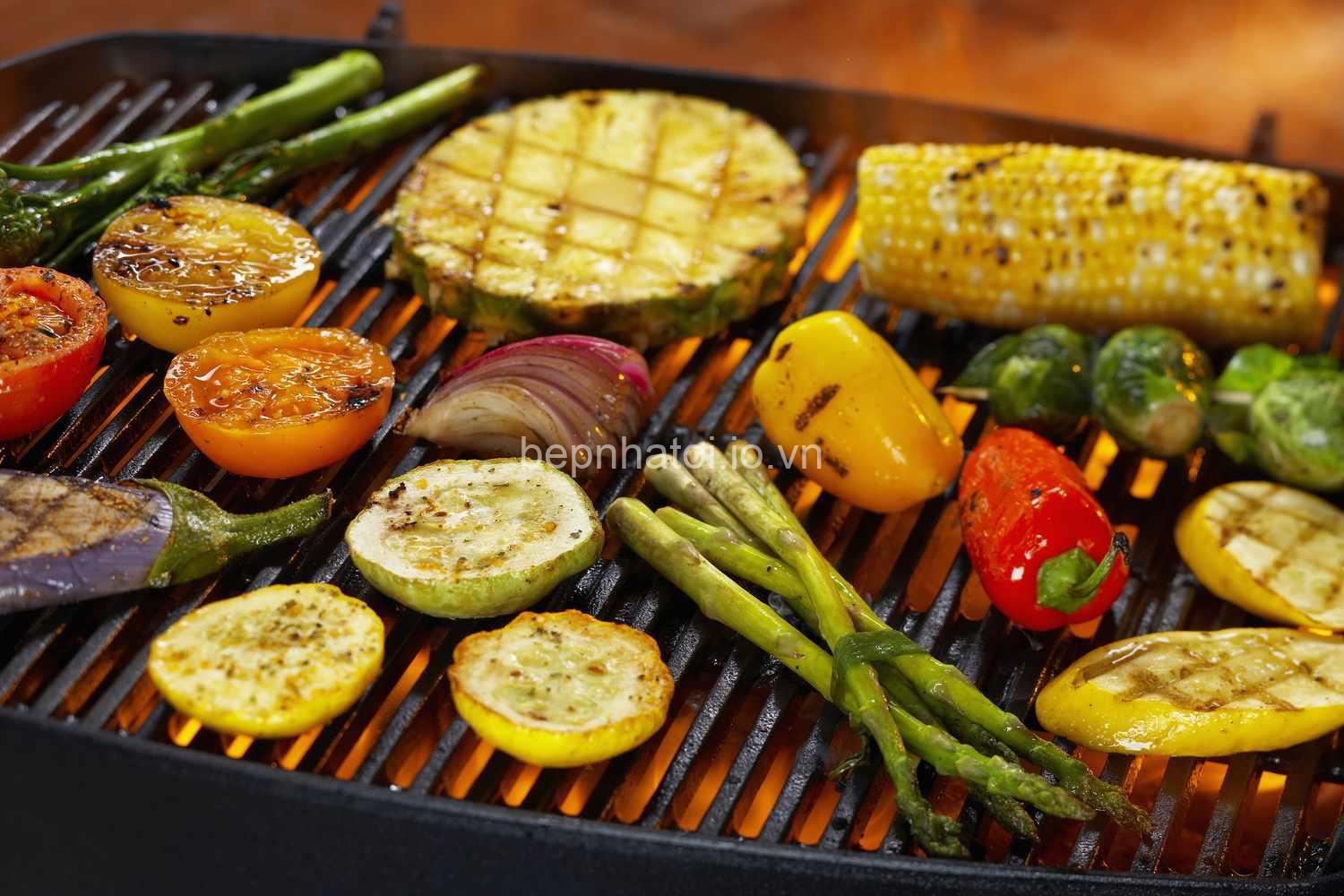
Prevent Food Drying in the Microwave: Master Moisture Retention Techniques. In today’s article, bepnhatoi.io.vn will explore with you in the most detailed and complete way. See now!
Master the Art of Microwave Moisture Retention
You love the convenience of the microwave, but you hate that dry, rubbery texture that can happen to your food. Let’s face it, nobody wants that! But why does this happen in the first place?
The culprit? Microwave energy. Microwaves work by heating water molecules in food, causing them to vibrate rapidly. This vibration generates heat, which cooks your food. But the problem is that this rapid heating can also cause moisture loss, especially if you aren’t careful. Think of it like a mini-oven, where the heat can evaporate the natural moisture of your food.
So, how can you prevent this? By understanding the drying mechanism, you can employ techniques to trap in the steam and moisture, resulting in delicious, perfectly cooked meals. The key strategies are:
- Covering your food: This is essential for trapping the steam and preventing moisture loss.
- Adjusting your cooking technique: This involves using the right power settings, heating in shorter intervals, and stirring your food.
- Adding moisture: This can be done by adding a little water, broth, or sauce to your food.
Let’s explore these strategies in detail!

Covering Your Food: The Foundation of Moisture Retention
Think of covering your food like creating a mini-steam room for it. The cover traps the steam generated during cooking, preventing it from escaping and keeping your food moist. Imagine the deliciousness!
Here are some methods for covering food in the microwave:
- Plastic wrap: Plastic wrap is convenient and affordable, but it’s crucial to vent it to allow steam to escape. This prevents pressure buildup and potential explosions!
- Wax paper: Wax paper is a great option for covering dishes that are prone to sticking. However, it’s important to ensure the wax paper doesn’t touch the food.
- Microwave-safe lids: These come in various shapes and sizes, making them suitable for different containers. Look for vented lids to ensure even steam distribution.
- Ceramic plates with lids: These offer a stylish and convenient way to cover your food. They’re also excellent for reheating soups, stews, and casseroles.
- Damp paper towels: This simple method can be effective for certain foods. Wet a paper towel and drape it over your food. The moisture from the paper towel will help keep the food moist.
Remember: The ideal covering method will depend on the food you’re cooking and the container you’re using. So, experiment and find what works best for you!
Adjusting Your Cooking Technique for Optimal Moisture
You’ve got your cover down. Now, let’s fine-tune your cooking techniques to maximize moisture retention:
- Lower the Power: High power settings can lead to rapid heating and excessive moisture loss. Lowering the power setting to medium or low will help prevent overcooking and dryness.
- Shorter Intervals: Instead of heating for long periods, try shorter bursts of 30-60 seconds. Check your food after each interval and continue heating as needed.
- Stirring: This ensures even heating and prevents hot spots that can cause excessive drying. Give your food a good stir or rotate it halfway through cooking.
Adding Moisture: The Key to Preventing Dryness
Sometimes, a little extra moisture can make all the difference. Think of it as giving your food a refreshing drink! Here are a few ways to add moisture:
- Liquid Boost: A tablespoon or two of water, broth, or sauce can do wonders for keeping food moist. For lean meats, consider adding a small amount of broth or marinade.
- Steam It Up: Steaming is a great way to cook vegetables and other foods without drying them out. Use a microwave-safe steamer basket to gently steam your food.
- Wet Paper Towels: Placing a damp paper towel over your food can also help add moisture. The steam from the towel will help prevent dryness.
Food-Specific Strategies for Microwave Moisture Retention
Every food has its own quirks when it comes to microwave cooking. Let’s tailor our approach for optimal results:
- Meat: Lean meats are more prone to drying out in the microwave. Consider marinating them before cooking or adding a small amount of fat, such as oil or butter, to help retain moisture.
- Vegetables: Steaming is the preferred method for cooking vegetables in the microwave, as it preserves their texture and flavor. If you’re reheating cooked vegetables, add a splash of water to keep them moist.
- Other Foods: For pasta, add a little pasta water to the container before reheating. For leftovers, consider adding a small amount of broth or sauce.
Microwave-Friendly Accessories: Investing in Moisture Retention
You’ve mastered the art of covering, adjusting your cooking technique, and adding moisture. Now, let’s elevate your microwave game with some specialized accessories:
- Microwave Steamer Baskets: These allow you to steam food gently in the microwave, ensuring even heating and moisture retention.
- Silicone Lids: These are versatile and can be used to cover bowls, plates, and even casseroles. They’re microwave-safe, durable, and easy to clean.
- Microwave-Safe Casserole Dishes: These are designed for even heating and are excellent for reheating and cooking larger dishes.
Microwave Safety and Food Handling: Essential Considerations
Always remember to use microwave-safe containers and follow proper food handling guidelines when using your microwave. This ensures food safety and prevents accidents.
Remember: Always use oven mitts when handling hot containers!
Troubleshooting Common Microwave Drying Issues
Even the most seasoned microwave chef can encounter a few bumps in the road. Here are some common issues and how to troubleshoot them:
- Uneven Heating: This can lead to some parts of your food being overcooked and dry, while others remain undercooked. Stir or rotate your food halfway through cooking to ensure even heating.
- Scorching: This occurs when food comes into contact with a hot surface, resulting in dryness and a burnt flavor. Use microwave-safe containers, make sure the food is not directly touching the sides of the container, and consider using a cover.
- Tough Texture: Overcooked food can become tough and rubbery. Use lower power settings and shorter heating times to prevent overcooking.
Microwave Recipes for Delicious and Moist Results
Want to explore a world of flavorful and moist microwave meals? Check out our extensive collection of microwave recipes on bepnhatoi.io.vn! You’ll find recipes for everything from quick breakfasts to satisfying dinners, all carefully crafted to prevent dryness and deliver delicious results.
Beyond the Basics: Exploring Advanced Microwave Techniques
Ready to take your microwave skills to the next level? Explore advanced techniques like sous vide cooking in the microwave. This method involves sealing food in vacuum bags and cooking it in a water bath. It’s a great way to achieve perfectly cooked, moist results.
For more advanced techniques and resources, consult online cooking communities and culinary experts.
What is the best way to reheat leftovers in the microwave?
Reheating leftovers in the microwave can be tricky, as they often dry out. The best way to reheat leftovers is to cover them with a microwave-safe lid or plastic wrap. Add a small amount of water or broth to the container to provide extra moisture. Heat on a low power setting for shorter intervals, checking for doneness after each burst.
How can I prevent vegetables from becoming mushy in the microwave?
Vegetables can easily become mushy when microwaved. The key is to steam them gently. Use a microwave-safe steamer basket to steam the vegetables. Adding a splash of water to the bottom of the container can also help create steam.
Why does my food dry out even when I cover it?
While covering is essential, there could be other contributing factors:
- Power Setting: Using a high power setting can lead to excessive moisture loss, even with a cover. Lower the power setting to medium or low.
- Cooking Time: Overcooking can dry out food, even with a cover. Heat in shorter bursts and check for doneness.
- Container: The container you use can also affect moisture retention. Ensure the container is microwave-safe and has a tight-fitting lid.
What are some tips for preventing meat from drying out in the microwave?
Lean meats are more prone to drying out. Here are a few tips:
- Marinate: Marinating meat before cooking helps retain moisture.
- Add Fat: Adding a small amount of oil or butter to the meat can also help.
- Cook on Low: Cook the meat on a low power setting for shorter intervals.
How do I know when food is cooked through in the microwave?
It’s essential to check for doneness by inserting a meat thermometer or by visually inspecting the food. For example, meat should be cooked to a safe internal temperature, and vegetables should be tender but not mushy.
Conclusion
Mastering microwave moisture retention is all about finding the right balance of techniques and adapting to different food types. Whether you’re reheating leftovers or cooking a quick meal, remember to cover your food, adjust your cooking technique, and add a little moisture where needed. And don’t hesitate to experiment with different methods to discover what works best for you!
For more tips and tricks on animal care, pet products, and even microwave cooking, visit bepnhatoi.io.vn. Share your own microwave moisture retention tips in the comments below! We’d love to hear from you!
Entities
EVA
- Entity: Microwave Oven | Attribute: Power Level | Value: High, Medium, Low
- Entity: Food | Attribute: Type | Value: Meat, Vegetables, Leftovers, Pasta, Rice
- Entity: Container | Attribute: Material | Value: Plastic, Glass, Ceramic, Silicone
- Entity: Cover | Attribute: Type | Value: Lid, Plastic Wrap, Wax Paper, Paper Towel
- Entity: Cooking Time | Attribute: Duration | Value: 1 minute, 2 minutes, 3 minutes, etc.
- Entity: Steam | Attribute: Amount | Value: High, Medium, Low
- Entity: Water | Attribute: Volume | Value: 1 tablespoon, 2 tablespoons, etc.
- Entity: Food | Attribute: Texture | Value: Dry, Moist, Tender, Tough
- Entity: Microwave | Attribute: Safety | Value: Safe, Unsafe
- Entity: Food | Attribute: Temperature | Value: Cold, Warm, Hot
- Entity: Food | Attribute: Doneness | Value: Raw, Undercooked, Done, Overcooked
- Entity: Microwave | Attribute: Function | Value: Reheating, Cooking, Defrosting
- Entity: Cover | Attribute: Vented | Value: Yes, No
- Entity: Container | Attribute: Microwave-safe | Value: Yes, No
- Entity: Food | Attribute: Seasoning | Value: Salt, Pepper, Herbs, Spices
- Entity: Food | Attribute: Marinating | Value: Yes, No
- Entity: Food | Attribute: Fatty | Value: High, Medium, Low
- Entity: Food | Attribute: Moisture content | Value: High, Medium, Low
- Entity: Food | Attribute: Size | Value: Small, Medium, Large
- Entity: Food | Attribute: Shape | Value: Round, Square, Irregular
ERE
- Entity: Food | Relation: Cooked in | Entity: Microwave Oven
- Entity: Food | Relation: Covered with | Entity: Container/Lid
- Entity: Food | Relation: Contains | Entity: Water/Broth
- Entity: Food | Relation: Heated at | Entity: Power level
- Entity: Food | Relation: Cooked for | Entity: Time duration
- Entity: Food | Relation: Has | Entity: Texture
- Entity: Food | Relation: Has | Entity: Moisture content
- Entity: Container | Relation: Made of | Entity: Material
- Entity: Cover | Relation: Type | Entity: Lid, Plastic Wrap, Wax Paper
- Entity: Food | Relation: Requires | Entity: Microwave safety precautions
- Entity: Food | Relation: Can be | Entity: Reheated, Cooked, Defrosted
- Entity: Food | Relation: Adds | Entity: Flavor
- Entity: Food | Relation: Affected by | Entity: Steam
- Entity: Food | Relation: Requires | Entity: Stirring/Rotation
- Entity: Food | Relation: Affects | Entity: Cooking time
- Entity: Food | Relation: Has | Entity: Size
- Entity: Food | Relation: Has | Entity: Shape
- Entity: Food | Relation: Affects | Entity: Doneness
- Entity: Food | Relation: Affected by | Entity: Temperature
- Entity: Food | Relation: Requires | Entity: Marinating
Semantic Triple
- Subject: Microwave Oven | Predicate: Has | Object: Power Level
- Subject: Food | Predicate: Is | Object: Type (e.g., meat, vegetable)
- Subject: Food | Predicate: Covered with | Object: Lid
- Subject: Food | Predicate: Cooked at | Object: Power level
- Subject: Food | Predicate: Heated for | Object: Time duration
- Subject: Food | Predicate: Has | Object: Texture
- Subject: Food | Predicate: Has | Object: Moisture content
- Subject: Container | Predicate: Made of | Object: Material
- Subject: Cover | Predicate: Is | Object: Type (e.g., lid, plastic wrap)
- Subject: Food | Predicate: Requires | Object: Microwave safety precautions
- Subject: Food | Predicate: Can be | Object: Reheated, Cooked, Defrosted
- Subject: Food | Predicate: Adds | Object: Flavor
- Subject: Food | Predicate: Affected by | Object: Steam
- Subject: Food | Predicate: Requires | Object: Stirring/Rotation
- Subject: Food | Predicate: Affects | Object: Cooking time
- Subject: Food | Predicate: Has | Object: Size
- Subject: Food | Predicate: Has | Object: Shape
- Subject: Food | Predicate: Affects | Object: Doneness
- Subject: Food | Predicate: Affected by | Object: Temperature
- Subject: Food | Predicate: Requires | Object: Marinating
Semantic Keywords
- Microwave cooking
- Food moisture
- Microwave drying
- Food preservation
- Microwave techniques
- Food safety
- Microwave tips
- Reheating food
- Cooking methods
- Microwave accessories






